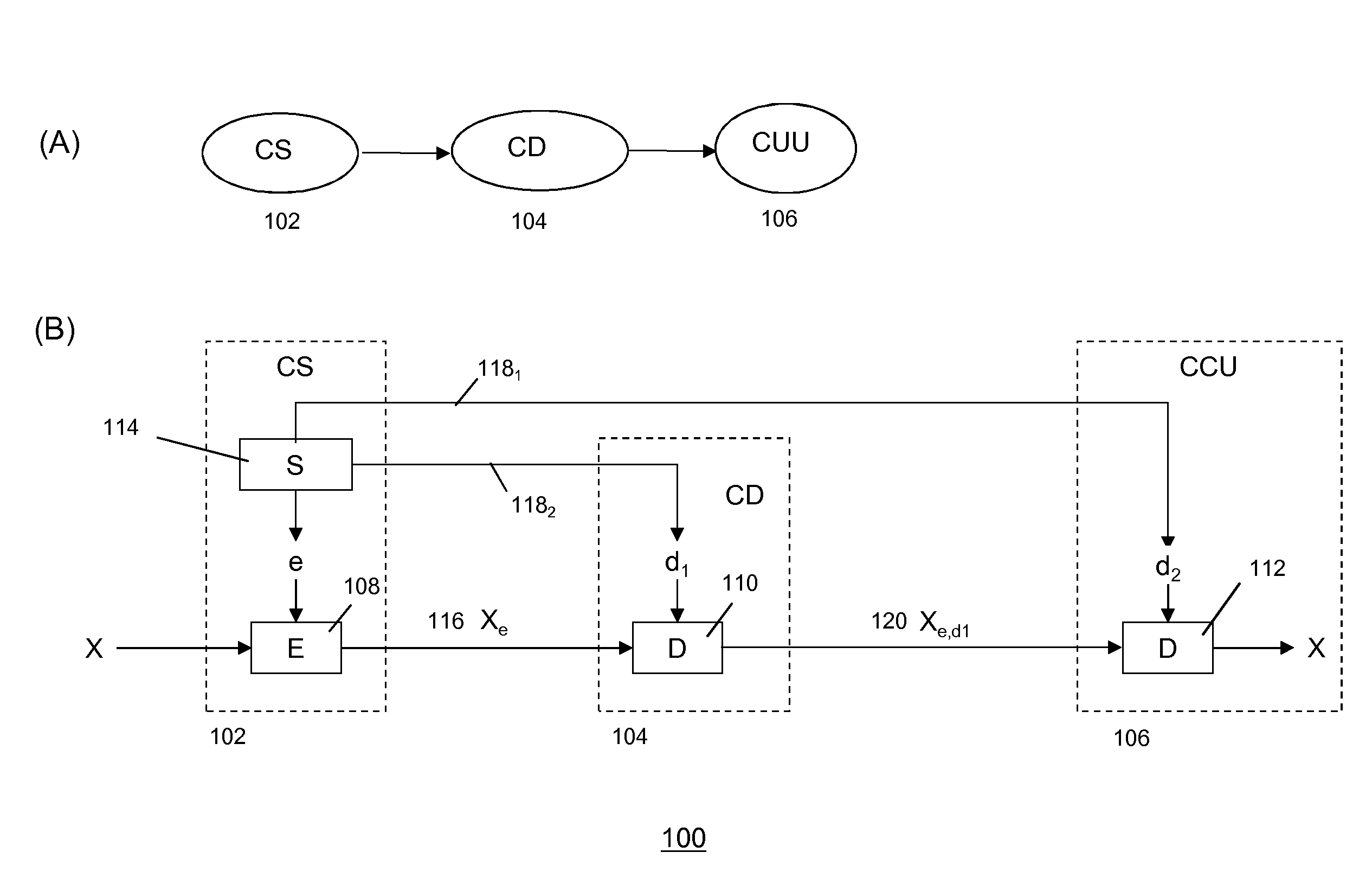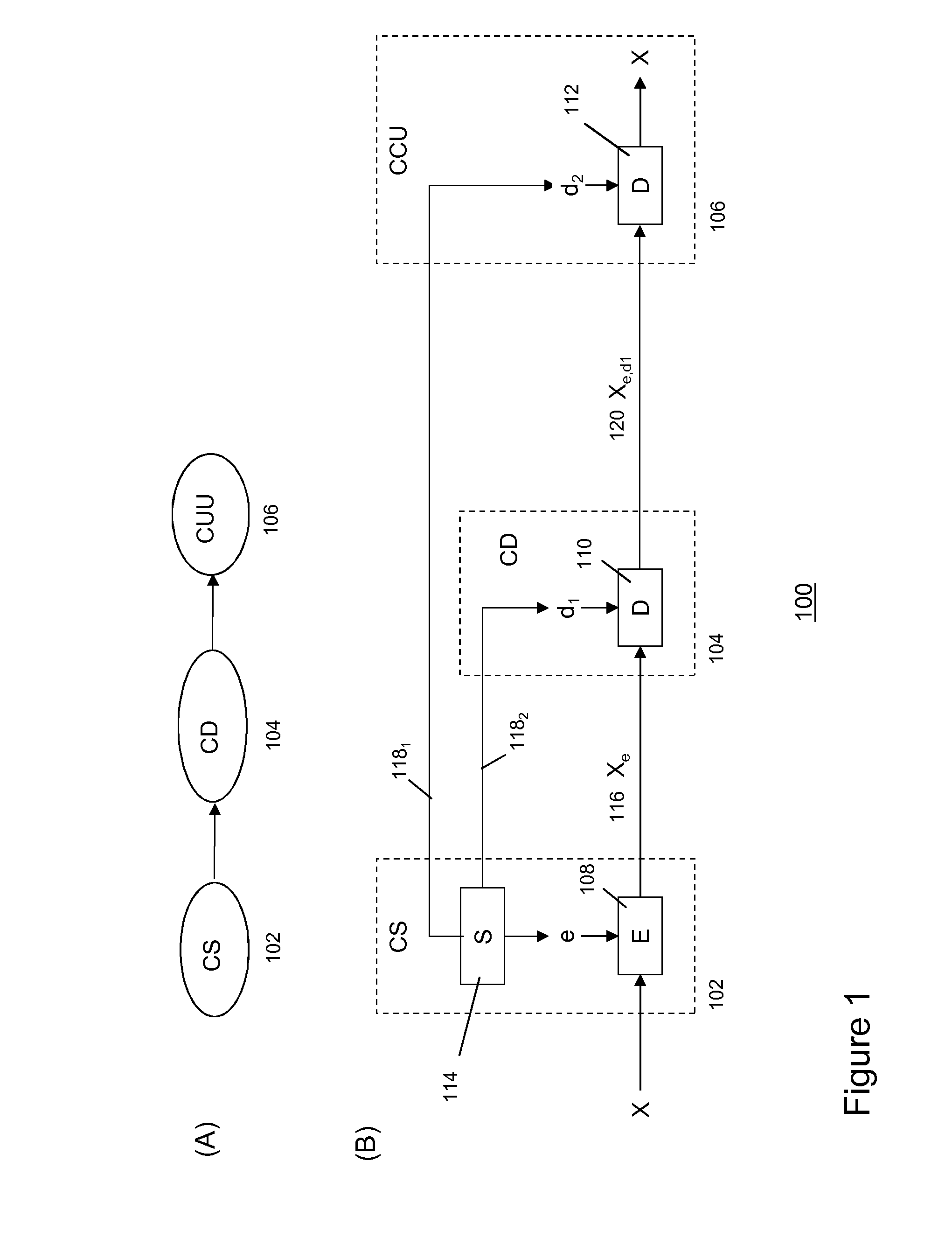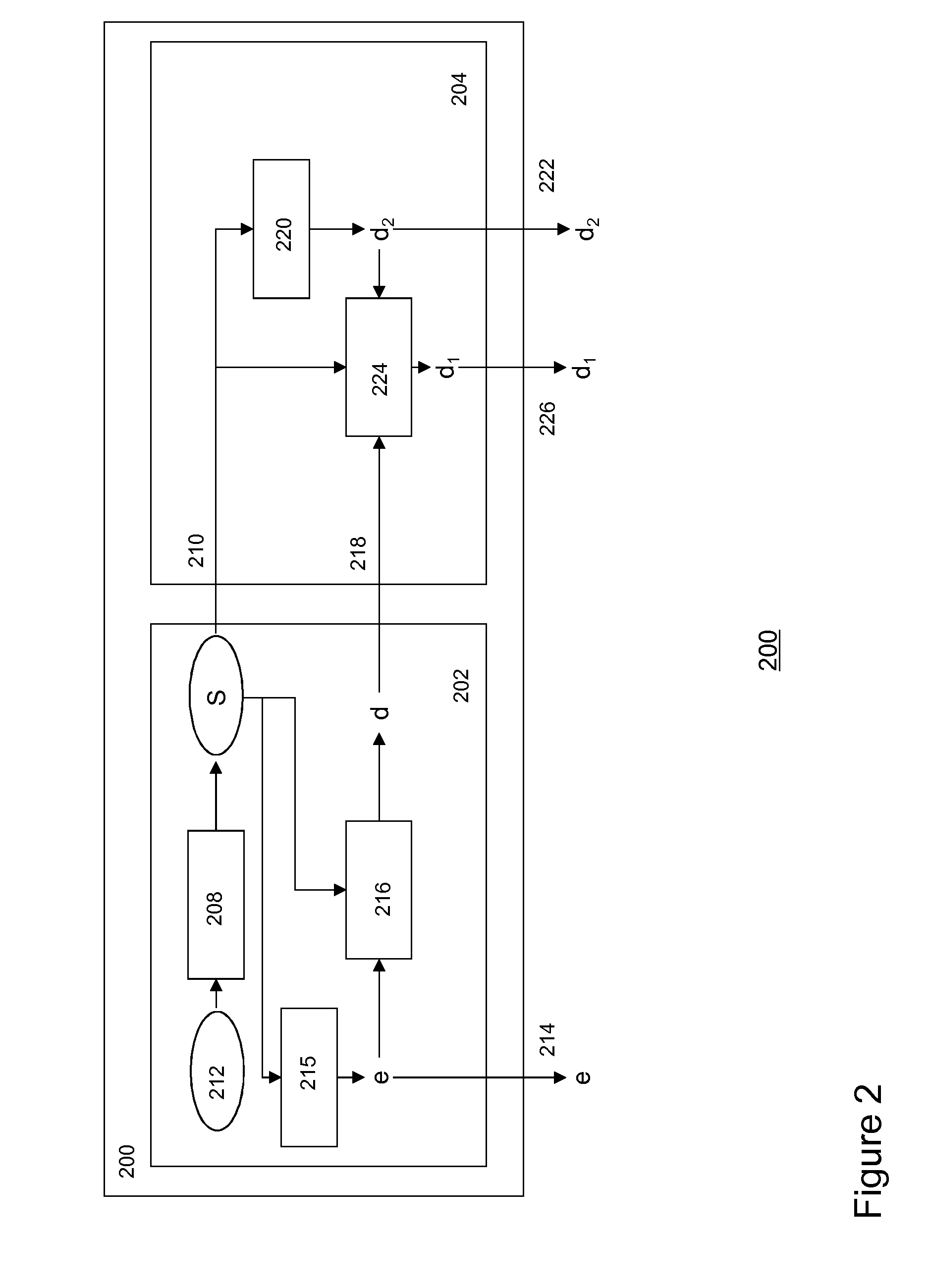Secure Distribution of Content
- Summary
- Abstract
- Description
- Claims
- Application Information
AI Technical Summary
Benefits of technology
Problems solved by technology
Method used
Image
Examples
first embodiment
[0100]In a first embodiment, a split-key cryptosystem may be based on the symmetrical encryption algorithm known as the “one-time pad”. In this embodiment, an encryption key e may be generated in the form of a long random binary number generated using a random generator. Encryption algorithm E may be a binary function for encrypting content item X into an encrypted content item Xe by applying an exclusive-or (XOR, ⊕) operation to X using e:
e=RAN—1
Xe=EPT(X)=X⊕e
[0101]A first split-decryption key d1 and second split-decryption key d2 may be formed on the basis of e. For example, second split-decryption key d2 may be a random binary number having the same length as e and first split-decryption key d1 may be generated by executing a bitwise exclusive-or operation between d1 and e:
d2=RAN—2
d1=d2⊕e
[0102]A first decryption operation may “partially” decrypt encrypted content item Xe into Xe,d1 by executing a bitwise exclusive-or operation on Xe and d1. A second decryption operation may full...
second embodiment
[0106]In second embodiment, a split-key cryptosystem may be based on a symmetric stream cipher. FIGS. 3(A) and (B) depict stream ciphers for use in a split-key cryptosystem according to various embodiments of the invention.
[0107]In particular, FIG. 3(A) depicts a linear stream cipher as an encryption algorithm E providing bitwise encryption of content item X into Xe on the basis of encryption key e. The linear stream cipher may use one or more multiple linear feedback shift registers (LFSR) 3021-3023, which may be combined by one or more XOR functions 3041,3042. An LFSR may comprise one or more preconfigured taps 3061,3062. A key k may form the start state of the (in this example three) LFSRs {k1, k2, k3, . . . , km} and the linear stream cipher is linear for used keys k.
[0108]In this split-key cryptosystem encryption key e and first split-decryption key may be generated as a set of random bits {e1, e2, e3, . . . , em} and {d11, d12, d13, . . . , d1m} respectively and split-decrypti...
third embodiment
[0112]In a third embodiment, a split-key cryptosystem may be based on the asymmetrical encryption algorithm known as the RSA encryption scheme. In that case, an encryption / decryption key pair e,d using the following cipher algorithms:[0113]Randomly select two distinct prime numbers p and q of similar bit-length;[0114]Compute n=p*q;[0115]Compute φ(n)=(p−1)*(q−1) wherein φ is Euler's so-called totient function;[0116]Randomly select an integer e such that 1[0117]Determine d by calculating the multiplicative inverse of e (modφ(n)), i.e.: d=e−1 (mod φ(n)).
[0118]The parameters p, q, φ(n), e, d and n may be stored as secret information for further use if necessary. In particular, the value n needs to be shared with the content distributor and the CCU, as these entities require n to perform their encryption and decryption operations. The value n may be transferred to the content distributor and the CCU in protocol messages associated with a content transaction. In one embodiment, when multi...
PUM
 Login to View More
Login to View More Abstract
Description
Claims
Application Information
 Login to View More
Login to View More - R&D
- Intellectual Property
- Life Sciences
- Materials
- Tech Scout
- Unparalleled Data Quality
- Higher Quality Content
- 60% Fewer Hallucinations
Browse by: Latest US Patents, China's latest patents, Technical Efficacy Thesaurus, Application Domain, Technology Topic, Popular Technical Reports.
© 2025 PatSnap. All rights reserved.Legal|Privacy policy|Modern Slavery Act Transparency Statement|Sitemap|About US| Contact US: help@patsnap.com



